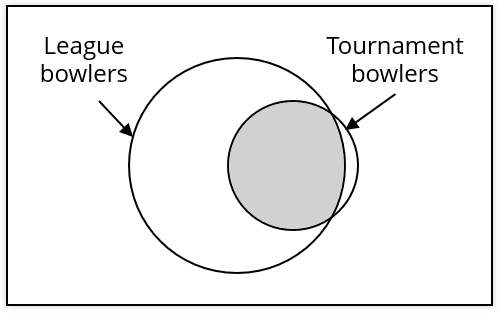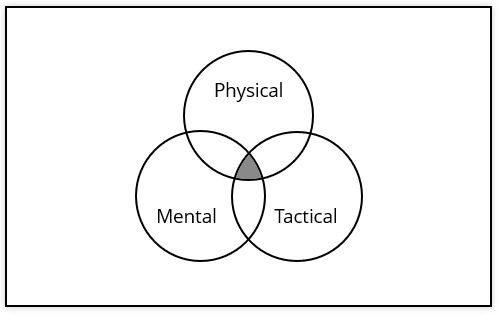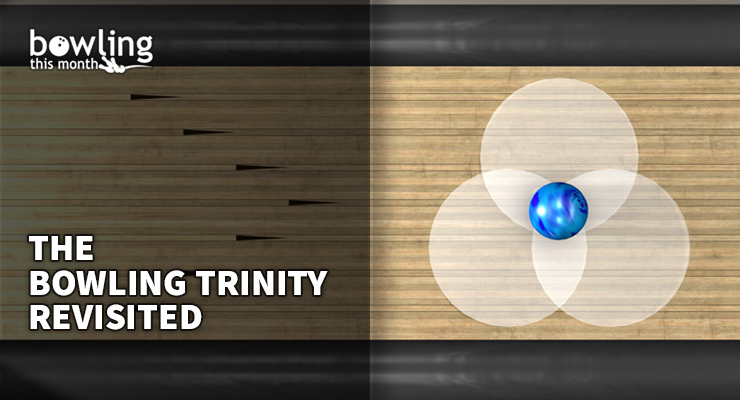Article Contents
- 1. Your bowling Venn diagram
- 1.1. Your skill sets
- 1.2. Your bowling universe
- 2. What’s new?
- 2.1. Expanding versus mastering your skills
- 3. Expanding your skills
- 4. Mastering your skills
- 5. Dovetailing your skills
- 5.1. Tips for using one skill to affect another
- 6. Moving forward
Note: This article is only available to Bowling This Month subscribers.
In 2012, I wrote a series of articles (available here and here) that introduced one of the key models I’ve used in coaching since then, a model I now refer to as the “Bowling Trinity.” Back then, I discussed the three main skill set categories involved in bowling—physical, mental, and tactical—as overlapping bubbles to create peak performance. I gave the names of Thinker, Blind Squirrel, and Active Volcano to people who have strengths in two of the three skill sets, but find themselves lacking in the other.
Since then, I’ve had the opportunity to be the head coach of a national program working with some of the best bowlers in the world, I’ve traveled internationally for competitions and seminars, and I’ve traveled North America to coach bowlers of all levels. In that time, I’ve revised and added to the model as I’ve learned and grown as a coach, so it’s time to revisit that model.
We’ll start where it all began: a Venn diagram and the bowling universe.
Your bowling Venn diagram
As a quick refresher, a Venn diagram is used to visually represent the intersection of multiple groups, within a given “universe.” This isn’t a perfect definition, but it will work for the purposes of this article.
Let’s do a quick bowling example, using all of the bowlers at a given bowling center as our universe. We’ll look at two subsets: league bowlers and tournament bowlers.

An example of a Venn diagram, showing the overlap between league bowlers and tournament bowlers.
Because almost every single tournament bowler is also a league bowler, the two subsets have a huge amount of overlap. When represented with a Venn diagram, it would look something like the above image.
Your skill sets
For our purposes, the three fundamental skill set categories mentioned above—physical, mental, and tactical—are represented by circles, like in a typical Venn diagram. Where all three circles overlap is where you are at your peak performance state. Someone who is just beginning might have limited overlap, and therefore a smaller window for great bowling:

Bowling skill set Venn diagram #1: an example showing a beginning bowler.
Someone with a wide range of physical skills, a strong mental ...
Already a premium member? Click here to log in.


